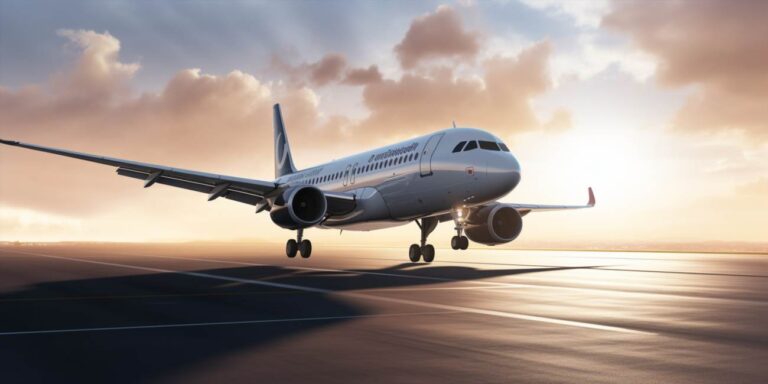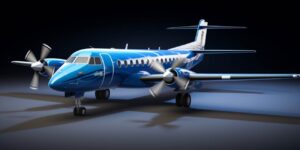The Airbus A319 is the smallest member of the family, offering a capacity for around 140 passengers in a typical two-class configuration. Its compact size makes it a preferred choice for airlines operating on routes with lower passenger demand or for airports with challenging operational constraints.
Stepping up in size, the Airbus A320 presents a slightly longer fuselage, accommodating approximately 150 passengers. The Airbus A321 takes it a step further with an extended fuselage, providing seating for up to 240 passengers in a single-class layout, making it the largest variant in the series.
One of the key highlights of the Airbus A319-321 family is their commonality. Airlines can seamlessly transition pilots and maintenance crews between the different variants, reducing training costs and enhancing operational flexibility. This commonality extends to the cockpit, systems, and handling characteristics, simplifying fleet management for operators.
Performance-wise, these aircraft are equipped with advanced technology, including fly-by-wire systems that enhance control and efficiency. The Airbus A319-321 family also incorporates aerodynamic improvements, such as winglets, to optimize fuel efficiency and reduce environmental impact.
When it comes to range, the Airbus A319-321 series offers impressive capabilities, covering short domestic routes to longer transcontinental flights. Airlines can configure the interiors to suit their specific needs, with options for business and economy class, ensuring passenger comfort and satisfaction.
Notable operators of the Airbus A319-321 series include major airlines around the world, contributing to the widespread presence of these aircraft globally. The family’s success is evident in its extensive order book and continued production, solidifying its status as a cornerstone in the commercial aviation market.
Airbus a319-321 – comparison of models and their technical parameters
The Airbus A319, A320, and A321 are members of the highly successful A320 family of narrow-body, twin-engine commercial aircraft produced by Airbus. While they share a common design philosophy, each model is tailored to meet specific market demands and preferences.
The A319 is the smallest variant in the A320 family, designed to accommodate approximately 140 to 160 passengers in a two-class configuration. Its shortened fuselage, when compared to the A320, allows for increased versatility in terms of airport operations and route planning. The A319 features a maximum takeoff weight (MTOW) of around 75,500 kg, providing a balance between fuel efficiency and performance.
Stepping up in size, the A320 is a mid-sized aircraft that typically seats around 170 to 200 passengers in a two-class layout. With a slightly longer fuselage compared to the A319, the A320 retains the family’s characteristic fuel efficiency and performance. The A320 has a maximum takeoff weight of approximately 78,000 kg, making it suitable for a wide range of short to medium-haul routes.
The largest member of the A320 family is the A321, known for its extended fuselage and increased passenger capacity. Capable of seating around 185 to 240 passengers in a two-class configuration, the A321 fills the gap between the A320 and larger, long-haul aircraft. The A321’s MTOW reaches approximately 93,000 kg, providing enhanced payload capabilities for airlines operating on medium-haul routes.
While all three models share common cockpit configurations and systems, the primary differences lie in their size, passenger capacity, and range capabilities. The A319 excels in serving airports with challenging operational conditions, the A320 strikes a balance between capacity and efficiency, and the A321 offers additional seating for airlines catering to higher passenger demand.
When examining the technical parameters, it’s crucial to consider the range of each model. The A319 typically has a range of around 3,700 nautical miles, the A320 extends this to approximately 3,300 to 3,900 nautical miles, and the A321 boasts a range of 3,200 to 3,900 nautical miles. These ranges highlight the A320 family’s versatility in covering a broad spectrum of routes.
Table: Technical Specifications
| Model | Passenger Capacity | Maximum Takeoff Weight (MTOW) | Range |
|---|---|---|---|
| A319 | 140-160 | 75,500 kg | 3,700 NM |
| A320 | 170-200 | 78,000 kg | 3,300-3,900 NM |
| A321 | 185-240 | 93,000 kg | 3,200-3,900 NM |
Airbus a319-321 – interior equipment and comfort of these aircraft
The Airbus A319-321 series boasts a meticulously designed interior, prioritizing passenger comfort and convenience. Let’s delve into the interior equipment that makes these aircraft a haven for travelers.
Starting with window seats, passengers are treated to a panoramic view of the skies. The windows are strategically placed, allowing ample natural light to flood the cabin. The window seats provide not only breathtaking views but also a sense of spaciousness, making the journey more enjoyable.
Now, turning our attention to the toilet facilities, Airbus has implemented state-of-the-art lavatories that combine functionality with elegance. The toilet areas are designed to optimize space, ensuring a comfortable experience for passengers. Modern amenities and hygiene standards are maintained, reflecting Airbus’s commitment to a seamless travel experience.
As for luggage storage, the Airbus A319-321 series excels in providing ample space for passengers to stow their belongings. Overhead compartments are strategically placed, easily accessible, and spacious enough to accommodate carry-on items. This thoughtful design ensures a smooth boarding process and allows passengers to travel with ease.
Stepping into the cabin, the interior is meticulously crafted with passenger comfort in mind. Ergonomically designed seats provide optimal support during the journey. The overall layout of the cabin is spacious, contributing to a relaxed and enjoyable atmosphere.
When it comes to catering, Airbus ensures that passengers are treated to a delightful culinary experience. The onboard catering service offers a diverse range of options, catering to various dietary preferences. Passengers can indulge in gourmet delights while cruising at altitude, adding a touch of luxury to their journey.
Entertainment is another key focus on the Airbus A319-321 series. The entertainment systems on board are cutting-edge, offering a plethora of options to keep passengers engaged throughout the flight. From movies and TV shows to music and games, there’s something for everyone, enhancing the overall travel experience.
Airbus a319-321 – the history and future of this popular series of aircraft
The Airbus A319-321 series has a rich history that has significantly shaped the aviation industry. Introduced in the late 1980s, these narrow-body, short- to medium-range aircraft quickly gained popularity for their fuel efficiency and advanced technology. The A320 family, consisting of the A319, A320, and A321, has since become a staple in the global aviation market.
With continuous development over the years, the A320 series has undergone numerous upgrades, incorporating the latest innovations in aerodynamics, avionics, and materials. These improvements have not only enhanced performance but also contributed to the series’ sustained success. The versatility of the A319-321 has made it a preferred choice for various airlines operating in diverse market segments.
Looking towards the future, Airbus remains committed to evolving the A320 family to meet the evolving demands of the aviation industry. The ongoing development projects focus on further improving fuel efficiency, reducing emissions, and enhancing passenger comfort. The integration of cutting-edge technologies, such as advanced materials and digital systems, will undoubtedly play a pivotal role in shaping the future iterations of the A319-321 series.
When it comes to sales, the A320 family has achieved remarkable success globally. Airlines appreciate the operational flexibility and cost-effectiveness that these aircraft offer. The A321, in particular, has gained popularity for its extended range and increased passenger capacity, making it a preferred choice for both short and medium-haul routes.
Timely delivery of aircraft is crucial in the aviation industry, and Airbus has consistently demonstrated its commitment to meeting customer demands. The streamlined production process ensures that airlines receive their orders on schedule, contributing to the overall efficiency of their operations. The A319-321’s timely delivery has played a significant role in maintaining Airbus’s reputation as a reliable aircraft manufacturer.
As of the latest available data, the number of orders for the A319-321 series reflects its sustained market appeal. Airlines worldwide continue to place orders, indicating confidence in the series’ performance and future prospects. The competitive pricing, coupled with the aircraft’s operational advantages, further solidifies its position in the global commercial aviation market.






